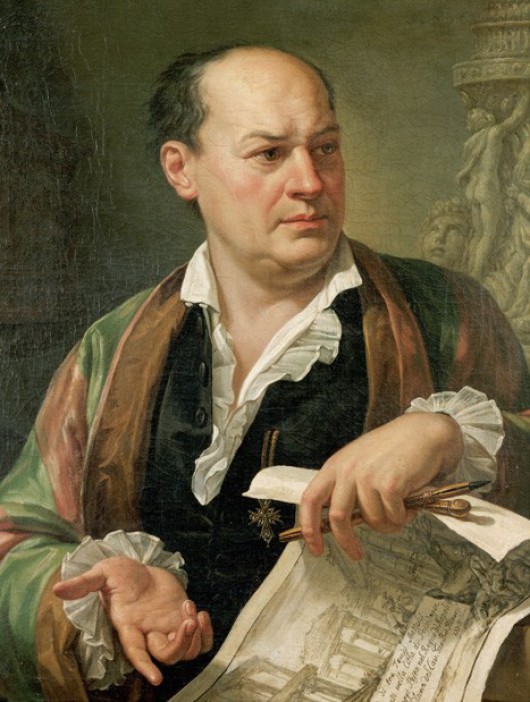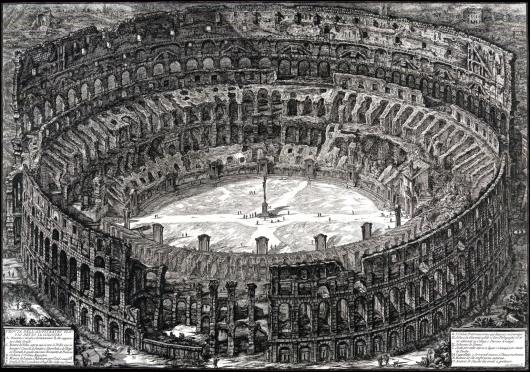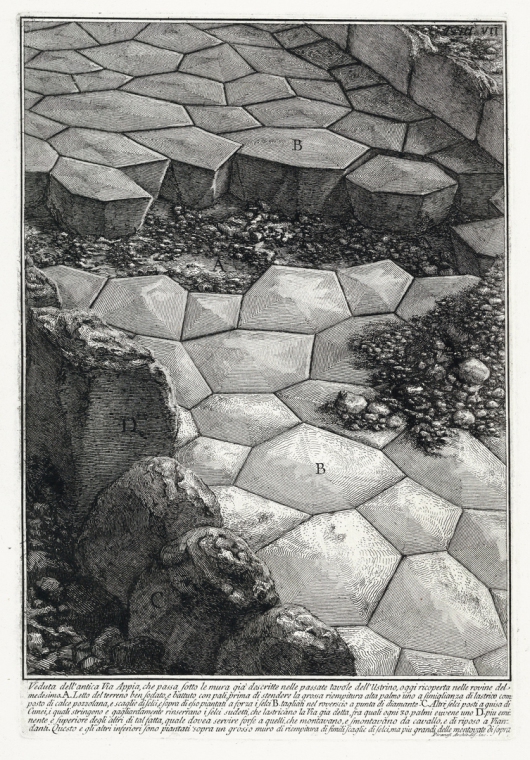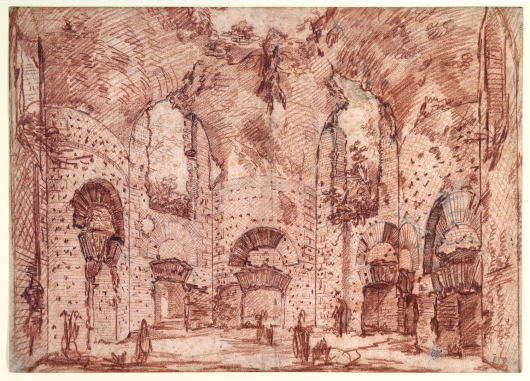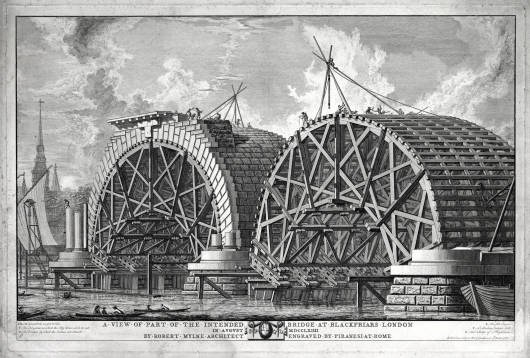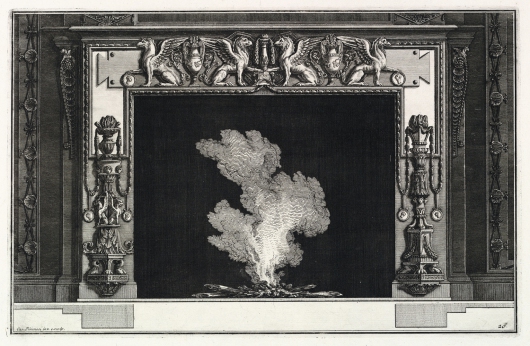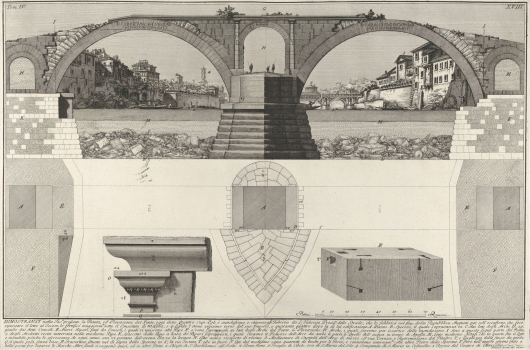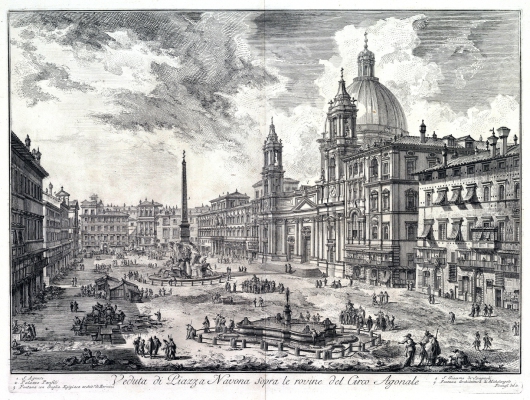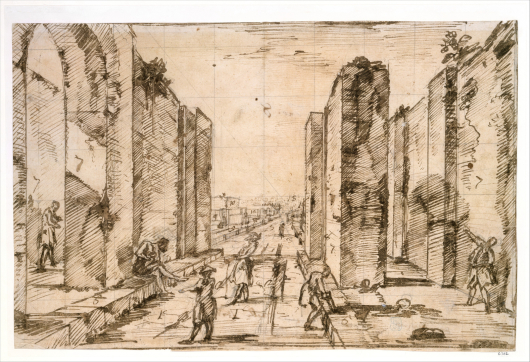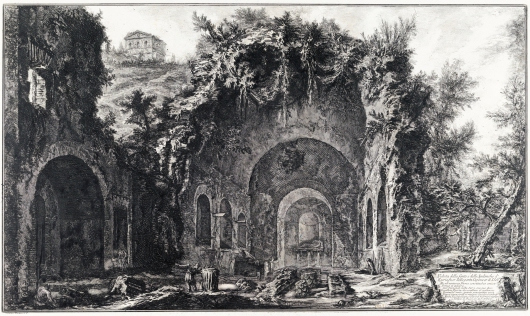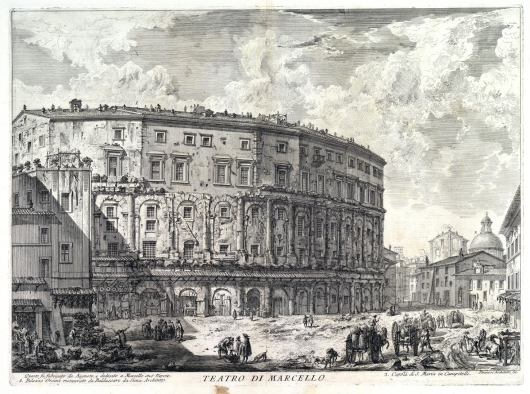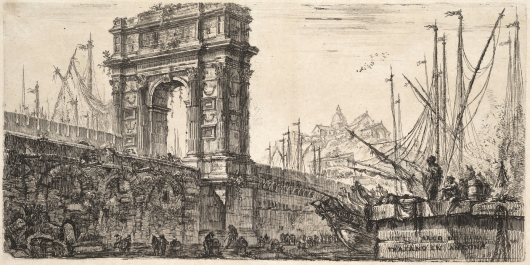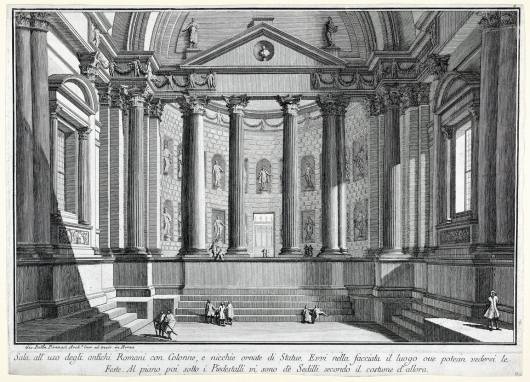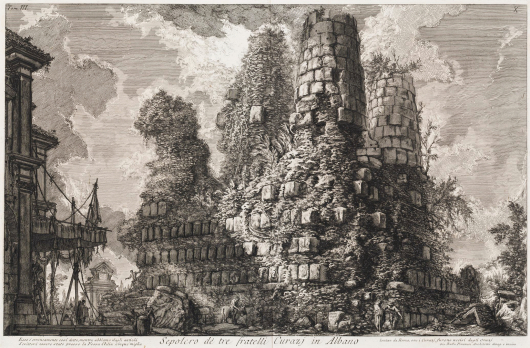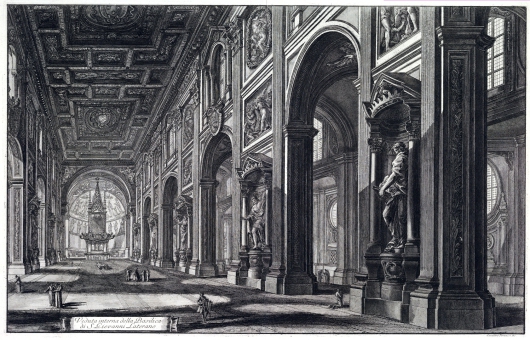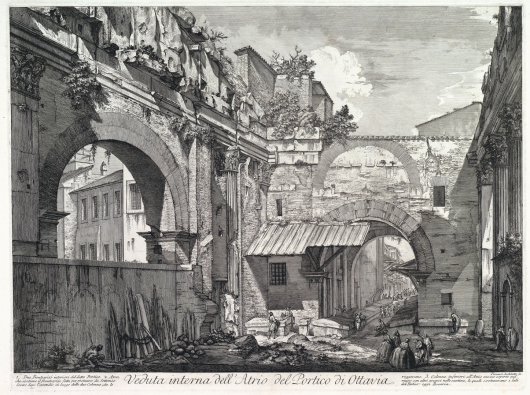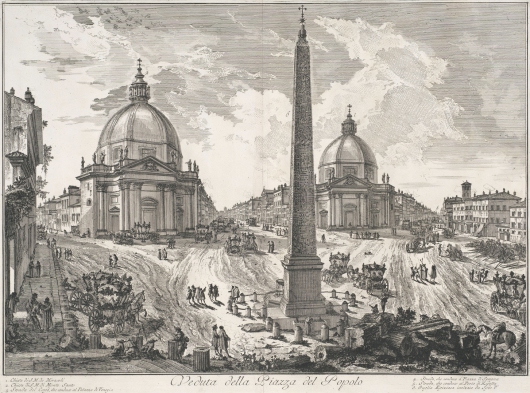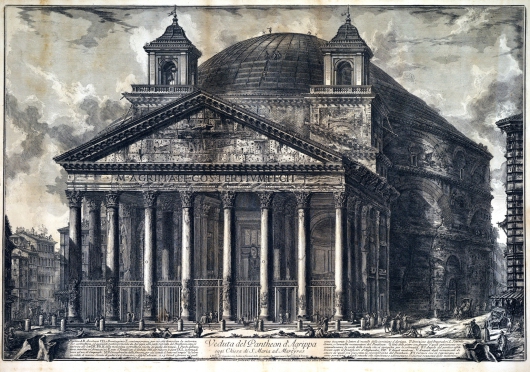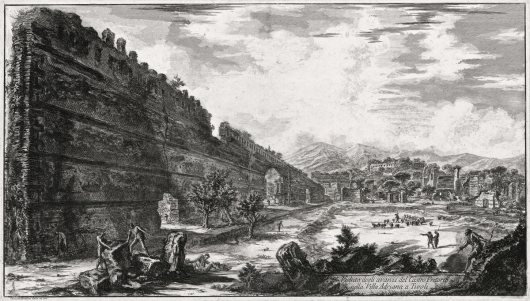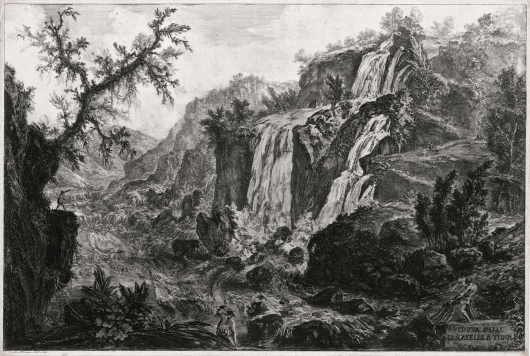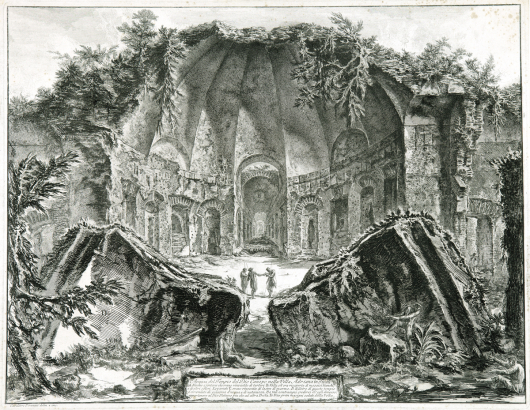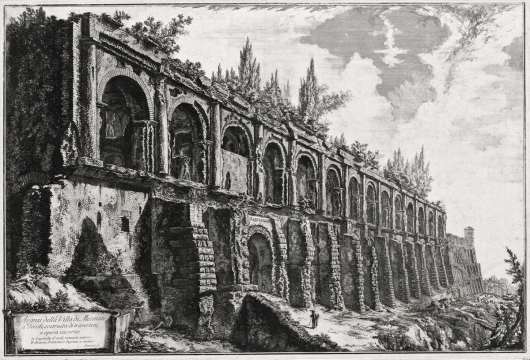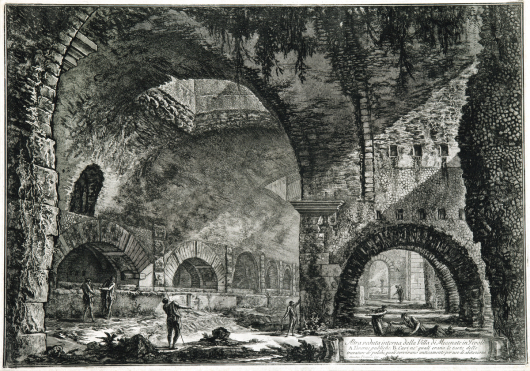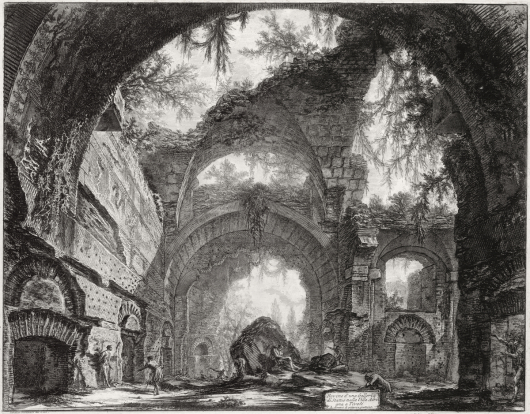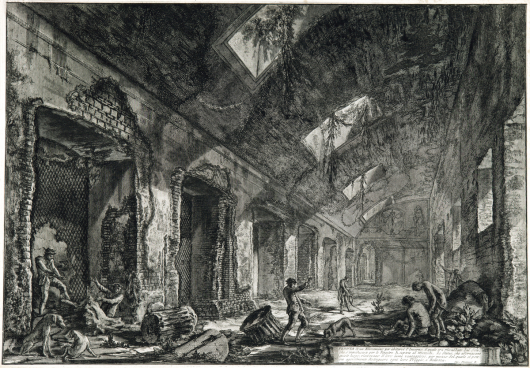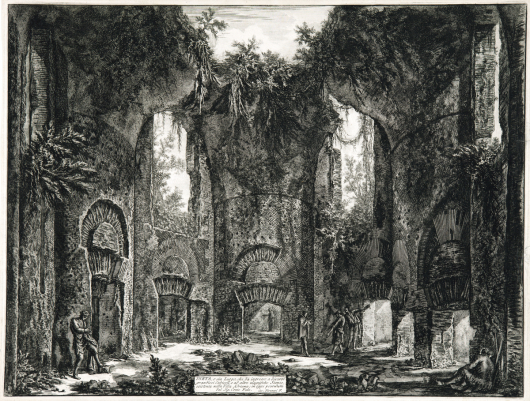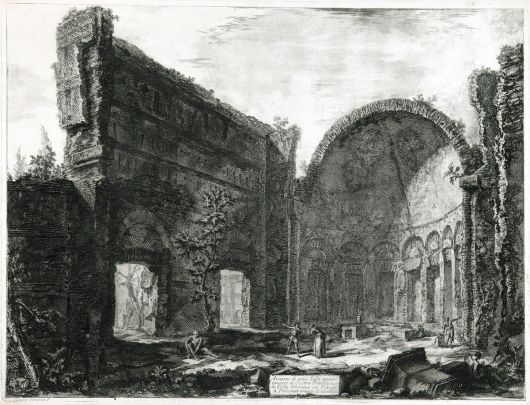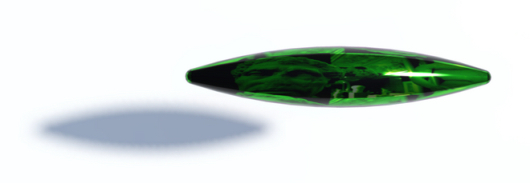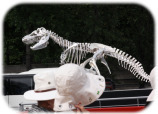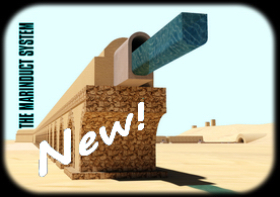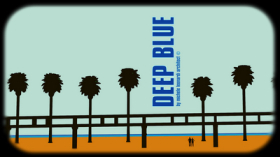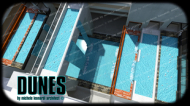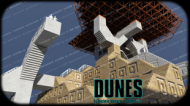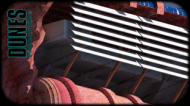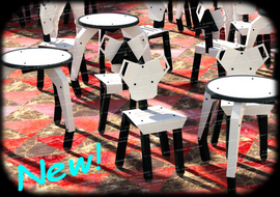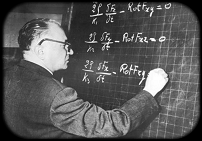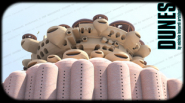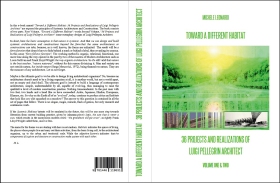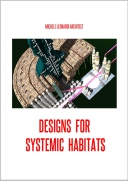Giambattista
Piranesi & Figlio
1
Giambattista P. 1720-1778, Francesco P. 1758-1810
Il realismo e l'astrazione.
Ritratto postumo di Giovanni Battista Piranesi di Pietro Labruzzi, del 1779,
esposto al Museo di Roma al Palazzo Braschi. Fonte: Wikipedia.
Giambattista Piranesi:
il realismo e l'astrazione.
Giambattista Piranesi prima che un grande artista, un incisore e un autore di libri, era un architetto. Però le sue opere di architettura, quelle solide, sono un ago nel pagliaio, sebbene ben note nella storia dell’architettura e sebbene passate spesso sotto gli occhi distratti di milioni di persone, tra visitatori e cittadini romani, a Roma.
In quanto alle sue famose stampe, diffuse e conosciute in tutto il mondo, tutta la sua opera figurativa si potrebbe leggere così: una visione del futuro. Certo, una visione d’altri tempi. Ma sempre una visione del futuro. Il futuro suo? Quello tuo? Mio, nostro? Dettaglio insignificante. Ogni visione è tale, è qualcosa che ha un senso, se pacifica.
Ma… Quan-to l’opera figurativa di un Giambattista Piranesi ha cambiato il mondo di lì a venire?
Molto di più di quanto solide e tangibili opere possano aver fatto dopo essere state prima applaudite dai più e poi presto dimenticate, a volte per sempre e immeritatamente purtroppo. E’ per questo motivo che l’architettura visionaria e immateriale del Piranesi sta ancora camminando, perché essa ha ancora dei seguaci presenti tra di noi, qualcosa ancora da dire, di incompiuto; essa è in movimento.
Un Piranesi non si guarda indietro, non regredisce vagheggiando un ritorno all’architettura degli antichi romani con tanto di imperatori - perché sarebbe ridicolo, non essendovi proporzione, né contesto, né ai suoi tempi, tanto meno oggi. Infatti quella delle rovine dell'antica Roma è pura ispirazione a partire dal dato di fatto delle rovine. E' la natura che si riprende tutto suo spazio, sottrattogli dall'ardire degli uomini. Non è nostalgia di un passato di gloria, è realismo. Romantico realismo, paradossalmente.
Ed è sullo sfondo di questa realtà che emerge la visione di Giovanni Battista Piranesi, "ribattezzato e risorto" nel di lui figlio Francesco Piranesi. Una visione, la sua, anzi la loro, che sta andando avanti ancora con le proprie gambe, con le loro opere, frutto del loro lavoro, molto più avanti di quanto si possa ritenere, perché la loro visione è immortale e cosmopolita. E' la visione di Roma, non tanto quella imperiale sinonimo di civilizzazione civile-incivile, guerra e architettura, uno schiaffo e una carezza, ma piuttosto quella post imperiale della fede incrollabile nei valori umanistici, a partire da Gesù Cristo, il più fecondo tra gli umanisti, fino ad arrivare ai nostri giorni. E' la visione del futuro preannunciata agli albori della cristianità da uno dei padri della Chiesa, Agostino di Ippona: è la grandezza dell'anima. Che sia poi mortale o immortale, spetta a noi decidere in cosa vogliamo credere o non credere. E' questo il libero arbitrio, e questa è la prova inopinabile della sua esistenza, tangibile, sperimentabile da chiunque, ergo rigorosamente sperimentale, massimamente sperimentale, quindi prova oggettiva, realistica quanto l'aria che respiriamo.
M.L.
"Veduta dell'Anfiteatro Flavio detto il Colosseo", 1785,
incisione di Francesco Piranesi collaboratore nella bottega del padre Giambattista, fin da giovanissimo affiancato dai familiari e da tutti gli altri collaboratori. Fonte: Universitaire Bibliotheken Leiden, Olanda.
Giambattista Piranesi Architetto disegno e incisione:
"Veduta dell'antica Via Appia", dalla serie "Le Antichità Romane", 1756.
Fonte: The Metropolitan Museum of Art, New York City, NY, U.S.A.
Giambattista Piranesi: The Octagonal Room in the Small Baths
at the Villa of Hadrian near Tivoli, ca. 1777.
Source: The Metropolitan Museum of Art, New York City, NY, U.S.A.
Giambattista Piranesi:
the realism and the abstraction.
Giambattista Piranesi before he was a great artist, engraver and book author, was an architect. However, his architectural works, the solid ones, are a needle in the haystack, although well known in the history of architecture and although often passed under the distracted eyes of millions of people, including visitors and Roman citizens, in Rome.
As for his famous prints, spread and known all over the world, all his figurative work could be read like this: a vision of the future. Of course, a vision from another time. But still a vision of the future. His future? Yours? Mine, ours? Insignificant detail. Every vision is such, it is something that makes sense, if pacific.
But... How much did the figurative work of one Giambattista Piranesi change the world thereafter?
Much more than solid, tangible works may have done after first being applauded by most and then soon forgotten, sometimes forever and undeservedly unfortunately. It is for this reason that Piranesi's visionary and intangible architecture is still walking, because it still has followers present among us, something yet to be said, unfinished; it is on the move.
A Mr. Piranesi does not look back, does not regress by vaguely fantasizing about a return to the architecture of the ancient Romans complete with emperors - because that would be ridiculous, as there is no proportion, no context, in his time, much less today. In fact that of the ruins of ancient Rome is pure inspiration starting from the fact of the ruins. It is nature taking back all its space, taken from it by the audacity of men. It is not nostalgia for a glorious past; it is realism. Romantic realism, paradoxically.
And it is against the background of this reality that the vision of Giovanni Battista Piranesi, "rechristened and resurrected" in his son Francesco Piranesi, emerges. It is a vision, that of his, or rather that of theirs, that is still going on with its own legs, with their works, the fruits of their labor, far ahead of what one might think, because their vision is immortal and cosmopolite. It is the vision of Rome, not so much the imperial vision synonymous with civilized-uncivilized civilization, warfare and building, a slap and a caress, but rather the post-imperial vision of unwavering faith in humanistic values, beginning with Jesus Christ, the most fruitful of humanists, and ending with our own day. It is the vision of the future foretold at the dawn of Christianity by one of the Church fathers, Augustine of Hippo: it is the greatness of the soul. Whether it is then mortal or immortal is up to us to decide what we want to believe or not believe in. That is what free will is, and that is the inopinable proof of its existence, tangible, testable by anyone, ergo strictly experimental, maximally experimental, therefore unforeseeable proof, as realistic as the air we breathe.
M.L.
Piranesi: "A view of part of the intended Bridge at Blackfriars",
1764, London, British Empire.
Source: The Metropolitan Museum of Art, New York City, NY, U.S.A.
Cav. (Francesco) Piranesi: "Disegno per un camino", 1769 ca.
Source: The Metropolitan Museum of Art, New York City, NY, U.S.A.
Giambattista Piranesi: Plan and elevation of the Pons Fabricius
(also known as the Quattro Capi Bridge), Rome,
from the series 'Le Antichità Romane'", 1756.
Source: The Metropolitan Museum of Art, New York City, NY, U.S.A.
Giovanni Battista Piranesi's drawing:
View through the Herculaneum Gate, Pompeii, 1778.
Source: The Metropolitan Museum of Art, New York City, NY, U.S.A.
Giambattista Piranesi: "Arco di Trajano ad Ancona", 1748 ca.
Source: THE MET, The Metropolitan Museum of Art, NYC, NY, U.S.A.
Giambattista Piranesi Architetto invenzione e incisione:
"Sala all'uso degli antichi Romani..." omissis, 1743.
Source: The MET, The Metropolitan Museum of New York, NY, U.S.A.
Giovanni Battista Piranesi Architetto disegno e incisione:
"Sepolcro di tre fratelli Curiazi in Albano".
Source: Harvard Art Museums, Cambridge, MA, U.S.A.
Giovanni Battista Piranesi: The Piazza del Popolo
("Veduta della Piazza del Popolo"), ca. 1750.
Source: The Metropolitan Museum of Art, New York City, NY, U.S.A.
Tivoli e Villa Adriana
ICONOGRAPHIC SOURCES
- Universitätsbibliothek Leiden, University Library Digital Collection, Leiden, Holland.
- e-rara, ETH-Bibliothek Zürich, Swiss, e-rara.ch.
- BnF, Bibliothèque nationale de France, Paris, France, gallica.bnf.fr.
- THE MET, The Metropolitan Museum of Art, New York City, NY, U.S.A.
- Harvard Art Museums collection online, Cambridge, MA, U.S.A.



